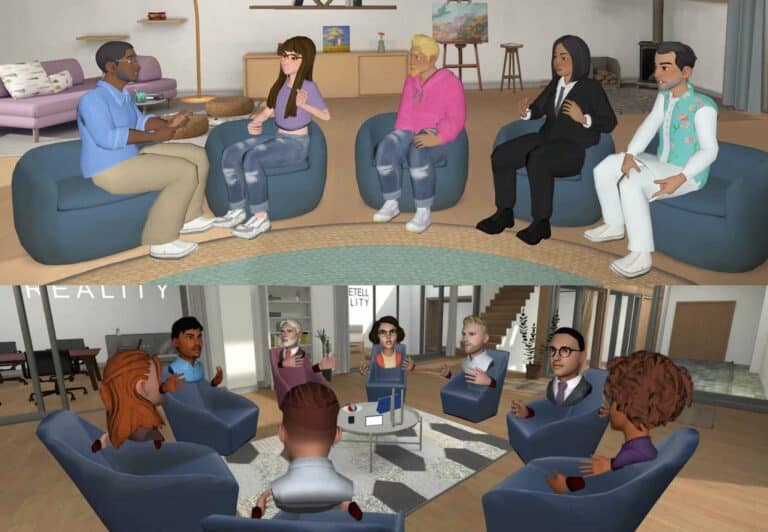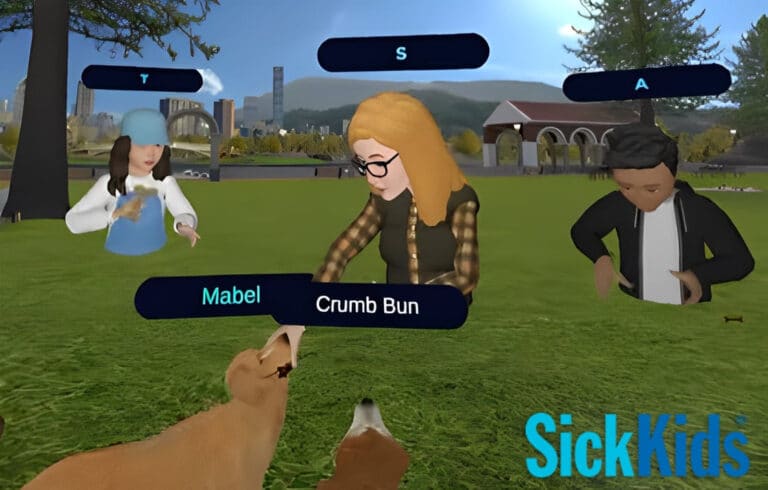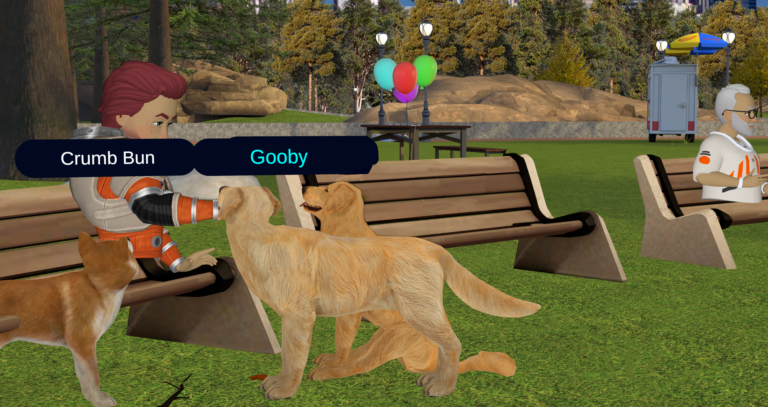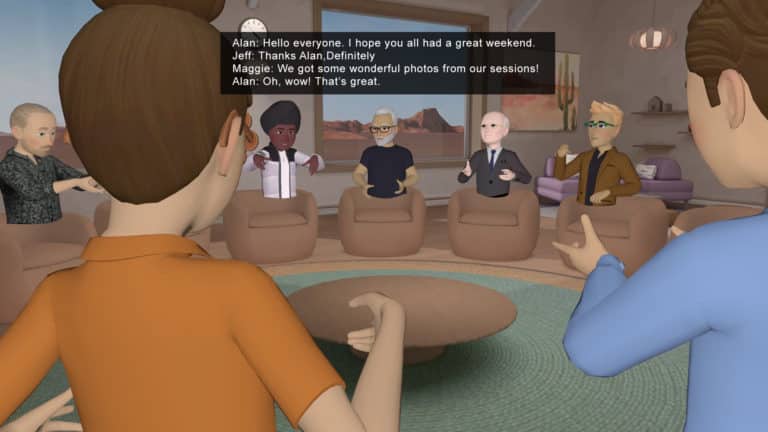A recent study asked twenty-one university students who were studying Spanish as a second language to compare the experience of practicing face-to-face with the experience of practicing in Virtual Reality (VR). Students carried out three sets of two dialogues each, one dialogue in VR using a head-mounted display and one with a fellow student in a physical space. Each set of dialogues was completed with different partners and content and participants. At the end of the experience, students were asked to fill out a survey about their experience.
According to researchers, “the survey showed overall positive experiences with social VR, and comparisons between F2F and VR conversations also yielded statistically significant findings indicating that VR can be a more fun way to practice speaking that can also reduce feelings of self-consciousness. A thematic analysis of the survey’s open-ended responses supported quantitative findings by highlighting lower stress when speaking in VR, increased enjoyment of being in virtual environments, and heightened engagement when speaking in VR.”
Virtual Reality offers various features which make it a unique tool for practicing spoken language and contextual word learning. Below are a few benefits that VR provides over video and even in-person learning. As with any other learning tool, the effectiveness of the instructional design and the instructor are fundamental to engagement and retention.
Expressive Avatars
Role play is uncomfortable in person and nearly impossible on Zoom. Trying to speak another language during role play adds another level of discomfort and distraction. By wearing the mask of an expressive avatar, language learners can focus on dialogue over how they act or appear. This was noted in the aforementioned study by students who described the “lower the stress when speaking in VR.”
Beyond reducing stress, avatar customization allows students the opportunity to take on different gender and identity roles during role play offering a broader range of interactions and scenarios. And, as noted below, combining personalized avatars with a library of interactive environments allows participants to play different roles while also interacting with other people, objects and media in the scene.
Interactive Environments
It is commonly accepted that immersion into a foreign language environment accelerates learning the language. By going to a farmers market in Barcelona on a daily basis, you will learn the names of fruits, vegetables, meats, cheeses, and pretty much every other staple quicker and with greater retention than by memorizing a set of flashcards.
Virtual Reality convincingly replicates real world environments including objects and people you would find in those settings. Instead of flipping through pictures in a book or watching a video animation, you can walk down an aisle filled with items that you would typically find in a drug store, clothing store, or grocery store. The experience can even be gamified. For example, receive 10 points for filling your shopping bag with five specified items and then interacting with the cashier in order to complete your purchase.
And populating these same environments with other students allows for conversational learning under the guidance of an instructor. For example, the role of the cashier above can be filled by a fellow language learner who now has the opportunity to practice interacting with a customer and with the local currency.
Tools for Instructors and Coaches
Virtual Reality offers new and unique ways not only to learn but also to teach a second language. Instructors can schedule sessions in different environments for specific groups of language learners or make spaces available for all levels of students to drop in and practice 24/7. They can participate in role play or observe from afar. Innovative features like direct audio channels allow instructors to speak into the ear of one student so as not to disrupt the scene being played out. And instructors can share audio clips, images, and video as well as lead guided 360 tours that provide insights into other cultures while reinforcing language learning.
Analytics and Playback
Language learning sessions in VR generate a variety of analytics that can be tracked over time. Interactions with objects, time spent speaking, and direction of gaze during role play and other exercises offer tangible feedback on progress and can be used to gamify the learning experience. For example, a student who advances to the next level of comprehension may receive a unique piece of avatar clothing denoting this achievement. This also indicates to other students what level their peers have achieved so they can practice with those at their level.
Additionally, instructors have the ability to record any session and play it back within the actual 3D environment. This allows students to listen to themselves and their peers without being self-consciousness of how they appear in a recorded video.
Access
The most popular VR headset on the market, the Meta Quest 2 had already shipped 10 million units by last November and that was before the holiday season where it was one of the most popular technology gifts. Though often marketed for gaming or exercise, Meta has recently placed an emphasis on supporting educational and training experiences. Additionally, other device manufacturers are rapidly entering the market creating more competition both from a price and capabilities perspective.
Just as the rise of the internet and mobile devices allowed millions of people to learn a second language online, the rapid adoption of VR by consumers offers an opportunity to take second language learning to another level, one that reduces stress, increases retention, and adds an element of engagement not possible through any other medium.
Foretell Reality is a VR platform that provides secure environments, customizable avatars, and instructor tools for interpersonal skills development including second language learning. Please contact us for a demo or with any questions.









